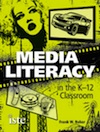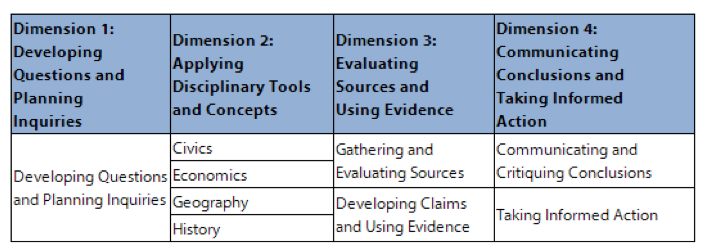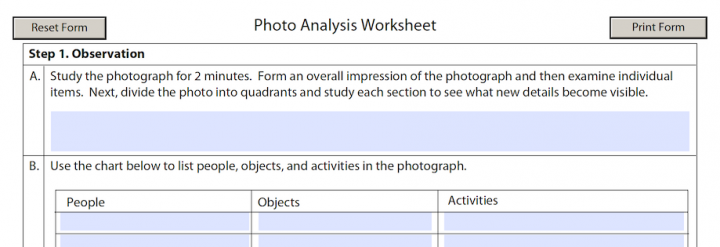Media Literacy in Today’s Social Studies Class
 By Frank W. Baker
By Frank W. Baker
For many years, I have taken the media literacy message to social studies educators in my home state of South Carolina. I’ve enjoyed presenting at their annual conference. With media literacy, there is no shortage of topics.
That’s why I’m pleased that the National Council for the Social Studies (NCSS) has recently published a revision of its Position Statement on Media Literacy, which I helped co-author. The statement provides educators with even more justification for engaging students in thoughtful medial literacy inquiry, analysis and deconstruction – including understanding media language and propaganda techniques, media economics, and so much more.
Critical inquiry is fundamental
One of the major goals of media literacy is critical inquiry. My colleague Elizabeth Thoman says it’s not about asking any question – but rather asking the right questions. What do we want students to know about the media, and how can asking the right questions help enlighten them? (I have previously written about those questions in this space, and you could use them with your students as they study and consider media messages.)
Critical inquiry is also a large part of the new College, Career & Civic Life C3 Framework in Social Studies, the product of a collaboration among 15 professional organizations, including NCSS, the American Bar Association, the American Historical Association, and the National Geographic Society.
At the center of C3 are four dimensions, all of which fit nicely with goals and objectives of media literacy.
To many of you, the C3 State Standards may be brand new. I hope social studies educators in your area are planning professional development around the dimensions to demonstrate how to better engage the 21st century learner.
The Position Statement: Video and Social Studies
Do you use videos and movies in your social studies classroom? Well of course you do. Think for a moment about the last time you used video.
Did you:
– present any pre-viewing questions prior to showing the video?
– introduce or define any vocabulary or concepts that might be presented in the video?
– ask for understanding at the conclusion of the video?
– utilize any teacher/viewer/student guide that accompanied the video?
– ask students if the selection of images used by the producers was biased or stereotypical?
If you’re answering “no” to any of the above questions, you’ve missed a media literacy “teachable moment.” But teaching media literacy is more than “critical viewing” skills.
In the new NCSS position statement, we said: “Through the decoding of content-rich media texts in the social studies classroom, students learn and practice the habits of asking key questions, applying historical analysis, identifying perspective, assessing credibility, providing text-based evidence, drawing conclusions, and reflecting on their own process of reasoning.”
What does it mean to decode media? Do you know? Do your students ever spend class time analyzing images, magazines or the news? Read on.
Examining Images in Social Studies Class
A simple visual literacy exercise can be accomplished using photographs from a variety of sources: from a textbook or from the morning’s news or an historical image from a reliable database. (I prefer to use images devoid of their captions. With nothing to read [no context] students are then forced to rely only on what they see. “Close reading” of imagery is then put into action.)
The National Archives, as you may already know, has an excellent, slow to load Photo Analysis Worksheet that is especially helpful if students are not accustomed to conducting close reads of images.
I also like a brief video tutorial, from the Critical Thinking Consortium, which introduces how to read a photograph.
The video introduces another downloadable worksheet which is perfect for helping students analyze images.
Campaign 2016 Is Full of Teachable Moments
The current presidential election season is prime time for engaging your students. I’ve previously written here about both campaign stagecraft and analyzing campaign ads. As we move closer to November, images and commercials will continue to play a large role in the campaigns.
I recently participated in an NCTE twitter chat (archived here) in which teachers from across the US chimed in on how they are already engaging students in thoughtful analysis, research and discussion at a time when name-calling and attack advertising seem to occupy the airwaves.
This spring, I created a web site featuring magazine covers that portrayed the candidates running for President of the United States. Many students don’t have experience conducting a “close read” of a cover, but my web site offers you plenty of explanations and recommendations.
With a head-to-head matchup between the Republican and Democratic nominees coming up in the fall debates, look for a future column on analyzing the rhetoric and the stagecraft of these unique encounters.
The News Meets Social Media (and Fake News)
Many of our students now receive their news from social media. But what happens if that “news” is not real? Some of them are guilty of forwarding on that news to their friends.
In the article Five Things To Do To Avoid Posting Fake News on Social Media, author Luvvie Ajayi offers this timely advice, which includes some important “media literacy” type questions:
• does this (posting) seem believable on a basic level?
• is the website (which has posted it) reputable?
• is this news reported elsewhere?
1. Click (the link) and read beyond the headline.
2. Look at the date.
3. Google it.
4. Look it up on Snopes (a website that debunks fake news).
5. Know your satirical websites.
A new survey indicates that many people don’t put much trust in the news they read via social media. In April, a poll by The Media Insight Project found that just 12 percent of respondents said they trusted news they found on Facebook while 18 percent said they trusted news on Twitter. Do your students follow the news? If so, what sources do they rely on?
How might you engage students about the news they consume, whether it’s in the classroom or at home? Media literacy offers a promising approach. Again, one of its goals is to get them to question what they read, hear or watch.
Questions you might consider using include:
– who or what is the source for this news story?
 – if social media is the source, where did they get the story?
– if social media is the source, where did they get the story?
– are reliable or biased sources quoted within the story?
– is the story balanced? How would you know?
– is there information omitted and if so what and why?
– where can a student go to get more, perhaps more trustworthy, news?
By getting students to consider these questions, and to consider who is spoon-feeding them their news, we hope to create a new generation of better, more responsible news consumers.
Finally, I can highly recommend the resources and activities at both The News Literacy Project as well as The Center for News Literacy.
Feature image credit: Snopes.com – “6 Quick Ways to Spot Fake News”
_______________
 Frank W. Baker’s most recent book is “Media Literacy In The K12 Classroom” (ISTE, 2012). He also authored Political Campaigns & Political Advertisements: A Media Literacy Guide, and has conducted hundreds of workshops for teachers and students around the United States. He helped write teaching standards for both English Language Arts and Visual/Performing Arts in his home state of South Carolina. He serves as a consultant to the Writing Improvement Network and to the Academy of Motion Picture Arts & Sciences. He maintains The Media Literacy Clearinghouse and tweets about media and media issues @fbaker.
Frank W. Baker’s most recent book is “Media Literacy In The K12 Classroom” (ISTE, 2012). He also authored Political Campaigns & Political Advertisements: A Media Literacy Guide, and has conducted hundreds of workshops for teachers and students around the United States. He helped write teaching standards for both English Language Arts and Visual/Performing Arts in his home state of South Carolina. He serves as a consultant to the Writing Improvement Network and to the Academy of Motion Picture Arts & Sciences. He maintains The Media Literacy Clearinghouse and tweets about media and media issues @fbaker.





































